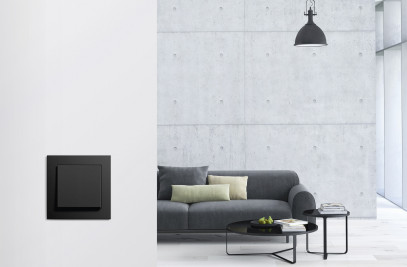Melbourne-based architectural studio Wood Marsh has completed the development of Bell and Preston rail stations as part of Victoria’s extensive Level Crossing Removal Project. The two stations embrace color and form as tools for placemaking and include new green spaces. The incorporation of Indigenous design elements helps to bolster inclusivity and foster opportunities for cultural learning.
Bell and Preston stations form two key parts of a considerable redevelopment taking place along the Mernda Line, a metro train line in Melbourne, Victoria. Four level crossings were removed by elevating the line, creating a green space equivalent to the size of three Melbourne Cricket Grounds. This green space was developed in collaboration with Australian urban design and landscape architecture studio Tract Consultants. The area is now “activated with improved amenities and connections, including landscaping, gathering spaces, and shared user paths,” says Wood Marsh.
Bell Station’s facade is designed as a reference to the heritage-listed housing found in the surrounding City of Darebin (in Melbourne’s northern suburbs). Wood Marsh created a three-dimensional pattern for the concrete facade as an abstract representation of the City of Darebin’s roofscape. “The angled patterns animate the facade, which includes multi-colored glass windows that filter colored light into the double-height concourse space,” explains the studio. Again referencing local architecture, Wood Marsh derived the eye-catching window hues from colors that illuminate the neighboring Darebin Arts and Entertainment Centre. A public amphitheater in Bell Station doubles as a flood basin and helps to create a seamless connection with the arts centre. In Bell Station’s planning, functions are located in the building’s four corners, thereby ensuring the generous concourse remains unencumbered.
The design of Preston Station is influenced by the neighboring Preston Market. The station’s facade resembles the barcodes used by market vendors and mixes a series of black vertical folds with colors inspired by the market’s assortment of produce. The cladding design continues in the station’s concourse and includes varicolored windows that filter colored light into the interior. Preston Station’s design can be adapted to the future development of Preston Market. Staircases in the station facilitate access to the platform from either end, helping to distribute passengers evenly along the platform and on the train.
“Throughout the project, color and form are used as tools for placemaking,” says Wood Marsh. “The Mernda Line is attributed a lilac identity — pink and lilac piers and feature lighting perform as civic markers.” The studio’s approach celebrates rail as a part of public architecture. Here, placemaking capitalizes on the facade patterns and colors of both stations, helping to create public spaces that enhance the urban fabric.
The incorporation of Indigenous design initiatives, including landscape and urban design elements, helps to create meaningful and inclusive spaces. The landscaping provides areas for yarning circles (dialogue circles) that are important to Aboriginal culture. There are also Indigenous design elements in the viaduct screen patterns and lift patterns at both stations. “The project fosters opportunities for cultural learning and serves as a functional community space,” says Wood Marsh. Green spaces and native planting grounds work to promote and build an ecological network. There is a shared walking and cycle path as well as open spaces with seating, play areas, and barbecue facilities. Moreover, the increased activation and use of the area helps to promote safety.
The design of Bell and Preston stations features a number of sustainability initiatives, including solar panels, rainwater tanks, and LED lighting. The two stations meet the highest Infrastructure Sustainability Council ratings for rail projects and 6 star Green Star requirements (from the Green Building Council of Australia).





























































